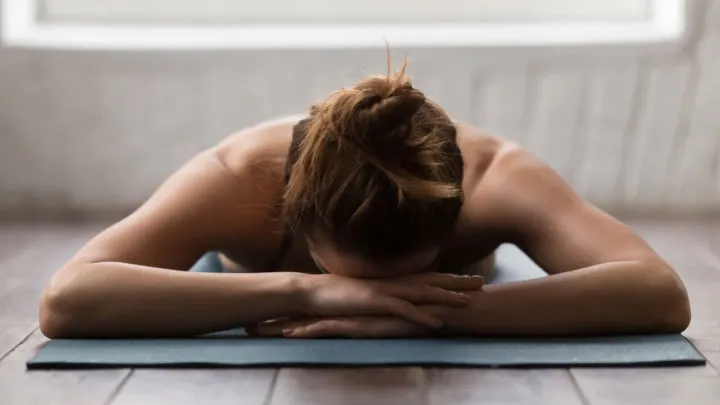Yin yoga is a quiet practice that is the complete opposite of the often favored yang style of yoga such as Vinyasa, Ashtanga, or Hatha. Yin should have a place in your practice, regardless of how much or little you exercise. Its benefits are substantial for both your body and mind, so before you write off this style of yoga dig into why a practice that is rooted in stillness is crucial.
What is yin yoga?
Yin yoga is a style of yoga where you hold poses anywhere from 3 to 5 minutes, sometimes even longer. It’s a very meditative style of yoga that has roots in both Indian yogic philosophy as well as Traditional Chinese Medicine and Daoism, which is a philosophy and religion that began in China and has influenced many Eastern countries.
The main takeaway about yin yoga is that it is a passive form of yoga, which allows the body to gradually move into each pose. There is no flowing, no jumping, and no getting sweaty. It is a quiet practice where you learn how to be in stillness not only in your body but in your mind as well.
There are three principles of yin yoga that every practice includes in order to find relaxation, move through emotions, and access your connective tissue – the main focus of yin yoga physically.
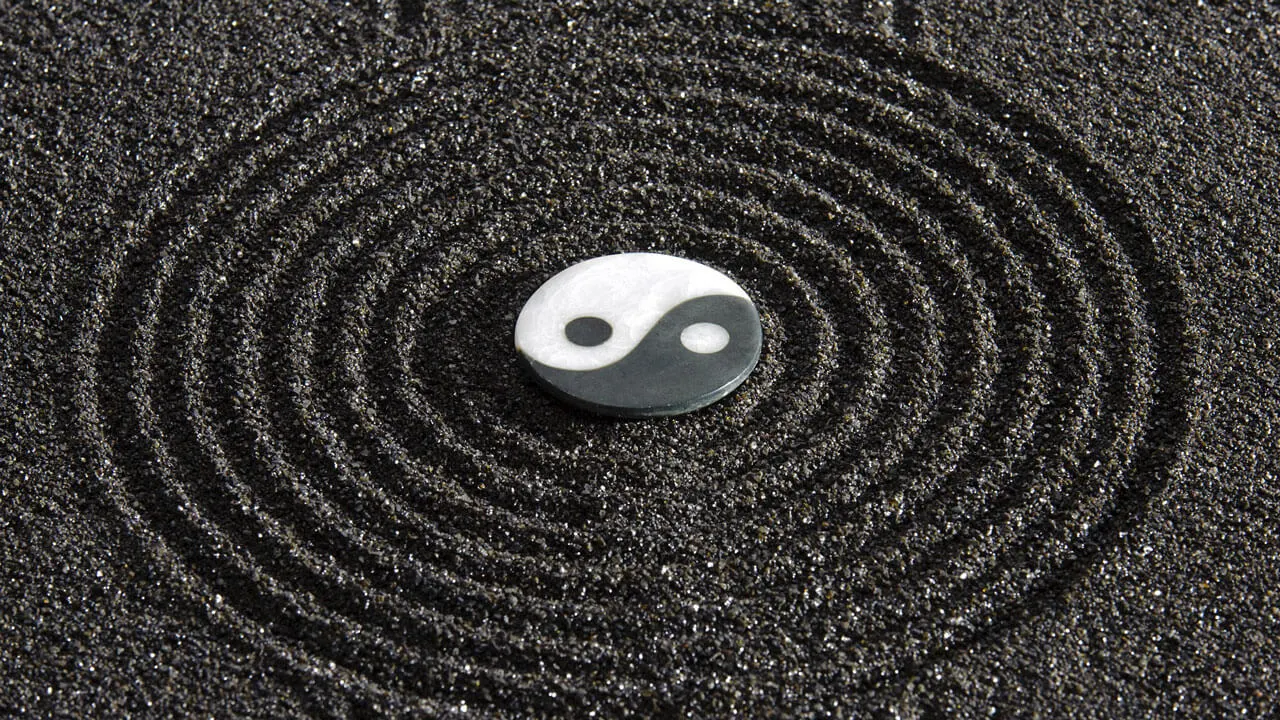
What is yin yoga good for? And how is it different?
Yin vs Yang Physically
The main difference between yin yoga and all styles of yang yoga, such as Vinyasa, Ashtanga, Kundalini, and Hatha, is that yin is passive and yang styles are active. The energy of these active styles of yoga are completely different from that of a yin class.
Yang yoga classes are practiced more so standing and involve sun salutations and oftentimes connecting breath to movement. Yin yoga classes are practiced mostly on the ground, sitting, or on hands and knees for a very relaxed sequence. The breath is still very much focused on but is not used as a guide for movement but rather for staying still in a pose.
Energetically is not the only way that yin and yang classes differ. Physically speaking, yang classes are focused on dynamic movement which stretches as well as strengthens the body at the same time. These classes build your heart rate up and are focused on your muscles.
Yin yoga works deep into your connective tissue, your fascia, which runs all through your body connecting your joints, muscles, bones, and ligaments. It even surrounds your organs and nerves. Yin focuses on the healthy stress of your joints instead of your muscles.
It’s because of fascia that you’re able to feel yin poses all over your body – it’s all connected! This type of deep tissue is only accessed when you hold poses for 90 seconds or longer, which is why it’s not accessed in a dynamic yang yoga class. Stretching your connective tissue is what keeps you flexible, by maintaining the length and health of your muscles.
Yin vs Yang Energetically
While yin yoga has connections to yogic philosophy and taps into the energy of the chakras like yang yoga, it also encompasses knowledge from TCM (Traditional Chinese Medicine) that includes meridian lines. Practicing yin yoga can be a bit like a deep tissue massage for your body. Acupressure can even be included in a practice, where you touch on certain points in each pose to engage a targeted meridian line. Though each pose will work like acupressure in itself without you even realizing it!
Mentally and emotionally yin and yang yoga differ significantly. With yang yoga you move through your emotions as you physically move from pose to pose, often forgetting about thoughts altogether because you’re focused on the sequence and your breath.
Yin yoga invites you to be still in each emotion and pose. It is a much more demanding class mentally and emotionally as there’s nowhere to go but inward with no distractions.
Yin’s differences are what makes this practice so unique and beneficial. It is not a practice that needs to be practiced constantly but is a great addition to any yoga practitioner’s regular practice as it helps to balance one’s energy. I would consider adding a yin class weekly or at least bi-weekly to your regular yang practice.
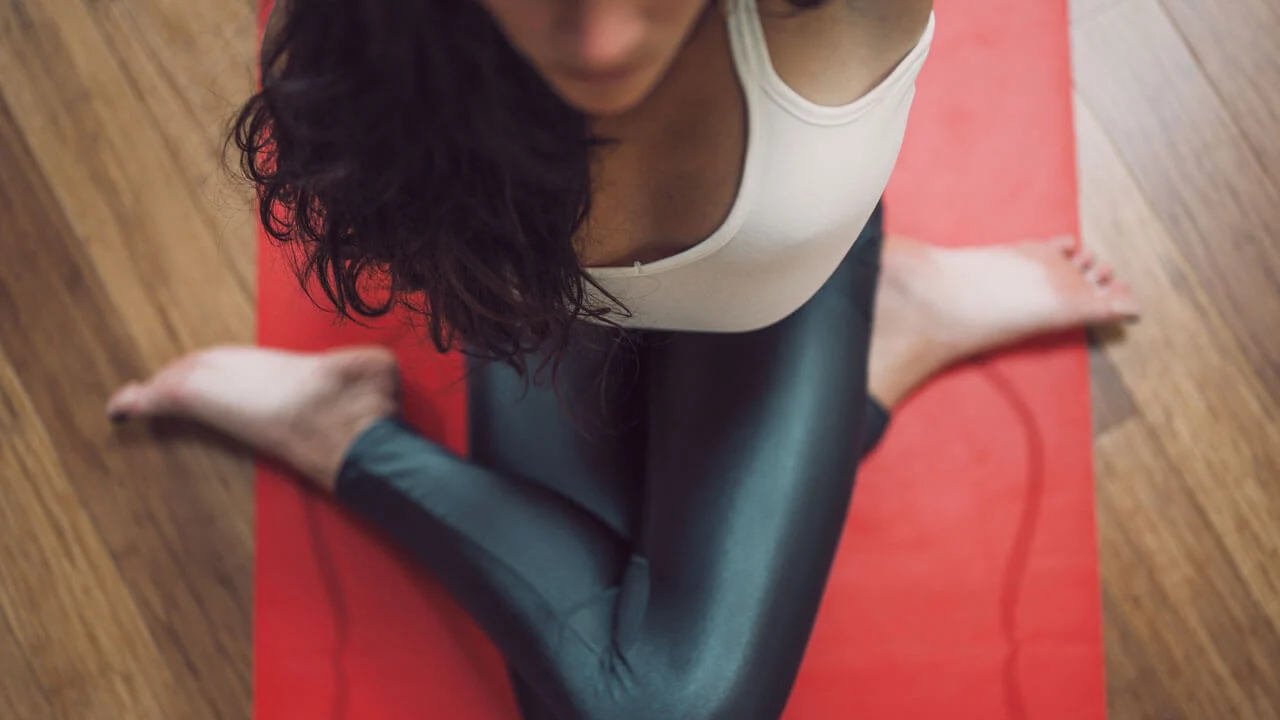
What are the benefits of yin yoga?
Yin has a number of mental and physical benefits that aren’t just limited to these, but these are certainly the most convincing.
- Increases flexibility and range of motion
- Reduces stress and anxiety
- Boosts circulation
- Balances mind, body and emotions
- Sleep better
- Cultivate patience
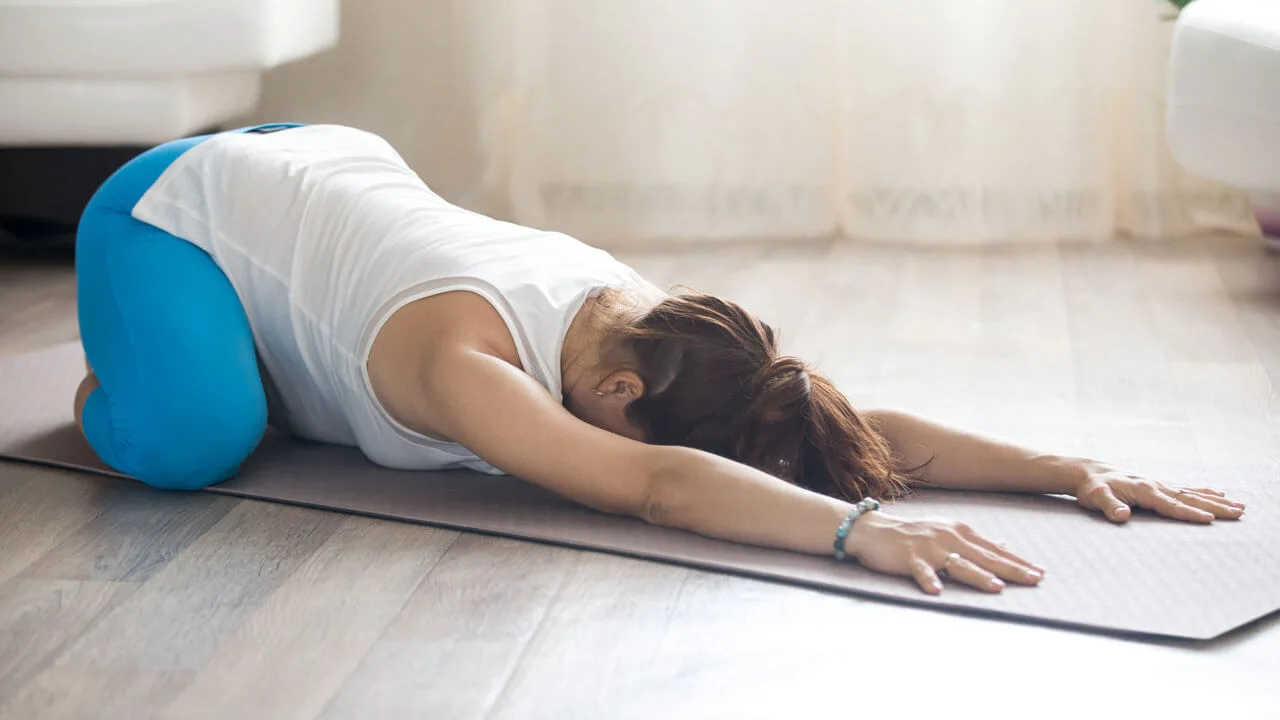
Who should practice yin yoga?
- All levels of regular yoga practitioners
- Athletes
- Fitness lovers (runners, cyclists, hikers, etc.)
- Desk workers
- Those who are very flexible
- Those who aren’t flexible
I could go on and on, but the reality is that most people can and should be practicing yin yoga. Due to the gentleness of this practice, it’s very accessible to the majority of the population. Don’t let the common myth about yin that it’s for “lazy” people stop you from receiving the benefits of this practice.
Is yin yoga good for beginners?
Absolutely! It’s actually great for beginners because it is a relatively simple practice that introduces students to poses slowly and with lots of guidance. It’s very easy to follow and make adaptable for your body.
Who shouldn’t practice yin yoga?
- Those healing from injuries
- Pregnant individuals should be more mindful
Yin yoga with injuries
If you are healing from an injury I advise that you turn to a restorative yoga practice. Yin yoga is not a fully relaxed practice as it still stresses the body and may put stress on your injury while it’s attempting to heal. Restorative yoga is better suited for injuries as it applies no stress.
Pre-natal yin yoga
Pre-natal yin yoga is safe, however, it is very important to be more mindful. While you’re pregnant the hormone relaxin is more prominent which is great for flexibility, but means that you could stretch too far and cause injury. This is why you’ll sometimes see it recommended to not practice yin while you’re pregnant.
If you are pregnant always consult your doctor beforehand, just like you would for any other type of yoga. Yin yoga can still be practiced while pregnant with modifications and certain poses are not practiced during specific trimesters.
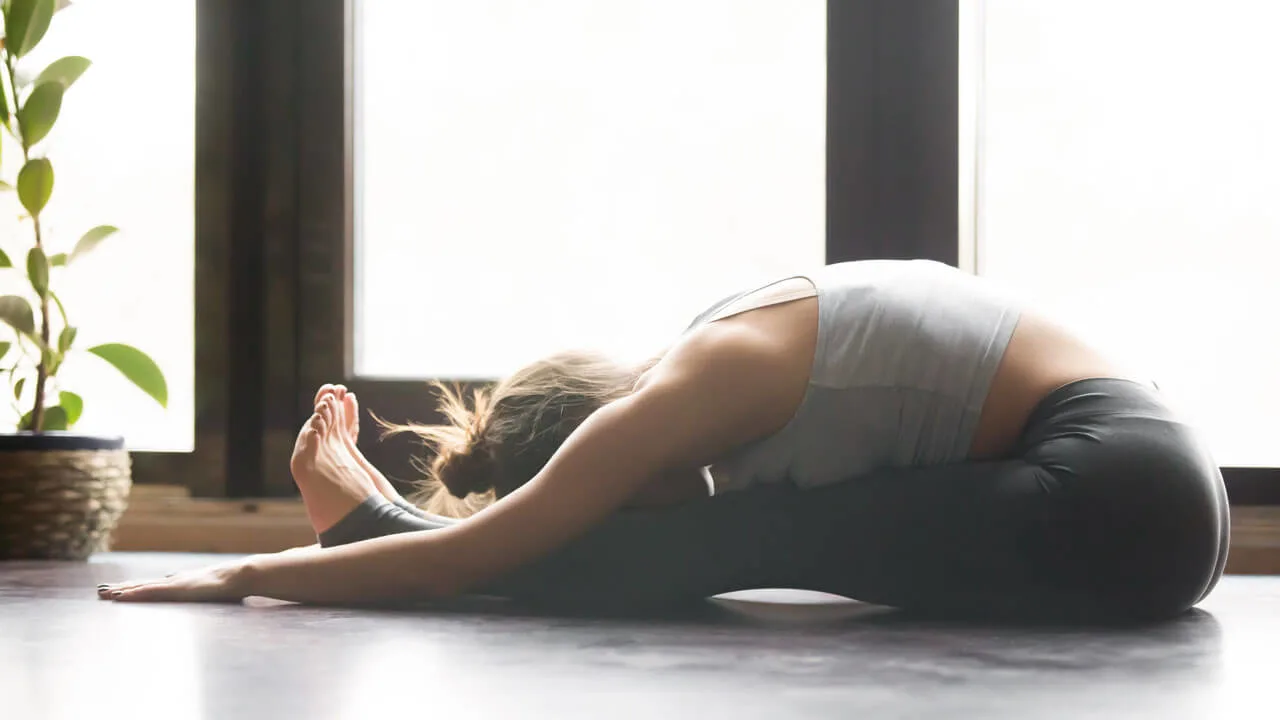
When should you practice yin yoga?
- Early morning
- Late evening
- Before active yoga or fitness
- When menstruating
Yin yoga is best practiced on cold muscles so early in the morning is ideal or late in the evening, before bed. Cold muscles is best because it ensures that you don’t move too deeply into your connective tissue where injury can happen. Always give yourself time after a yin practice though as it can leave you feeling too relaxed to do much else!
Yin yoga is also a great practice when you are menstruating and your energy levels are feeling low. Practicing yin yoga on your period can be very soothing for cramps and feel great to get some Qi (Chi, energy) flowing even when you don’t really feel like moving.
What’s next?
- Try yin with me on YouTube!
- Learn how to do yin yoga poses correctly.
- Balance your yoga practice with yin and vinyasa classes in my Journey Home yoga program.

